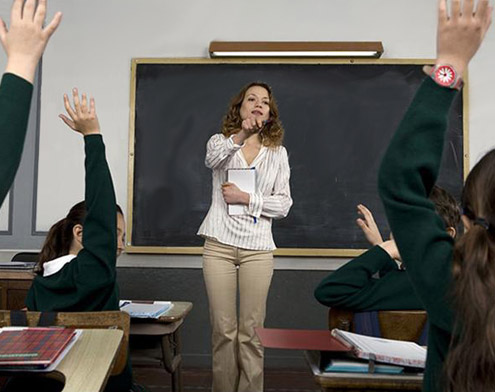Think about your content
You want a website is to transmit a message. The message might be 'hire me', 'listen to me' or something else. Whatever it is, your message needs to be clear, and easy to understand. If your message is spread over several pages, the pages need to be organised so that people can follow you easily. A website is a presentation, and presentations need to be interesting, easy to follow and a little creative.
To write an effective message, picture who the message is for; who your target reader is. Imagine a student, or a parent if you offer lessons for children, and then write your message for him or her. Also bear in mind that if you want Google to send people to your site, the content needs to be structured so that search engines can categorise, index and rate it.
Where do you start?
Your website needs to represent who or what you are, what you are offering, what makes you stand out from the competition and give people a reason and the ability to contact you. Never lose sight of that. Your website is your sales rep and your sales rep needs to know what he's supposed to be selling. Think carefully about each page on your website; what do you want Page 1 to talk about? Is it just a navigation page or does it have a specific aim? If you know what you want to say, it's so much easier to say it!
Your front, or landing page
The front page of your website acts like a shop window, and a good shop window tells people what a shop contains and gives them a reason to enter and buy something. Your front page must do the same. It has to give a visitor a reason to continue reading. It doesn't need to contain lots of information, but it must display what is available and tell visitors where to find it.


About me..
A typical 'about me' page includes any information such as background or qualifications and things like that, or why your website exists. Ask yourself what a potential visitor would like to ask you, then answer the question. As teacher it is probably a good idea to include a photo of yourself - assuming it's a good one!
Content pages
Most of your pages will deal with the products or services you offer. Remember that most people don't read everything on a website. They take a quick look, read the headlines and then make for the exit or contact page. Only a small percentage read everything. So, put the most important information near the top of each page, with clear headlines.
Organising content
Let's say that you are an English teacher, and that you want to offer private lessons for both children and adults, and you also offer proof-reading services. Before we go on, think of 'categories' as items on your navigation menu.
You could easily offer all three services on a single page, or you could divide them into individual pages. If you divide these three things into individual categories you have three distinct navigation menu items. Google likes pages which are focussed on an easily definable subject, which can be easily categorised. If you follow this path, Google will know that page 3 of your website contains information about English lessons for children in Cheltenham and be much more likely to show your page when someone searches for 'English lessons for children in Cheltenham'. And so on.
Draw a map
Every website has a structure. So, draw a map of your website. You have a front page. What connects to that? How are these pages linked? On a small site with 4-5 pages this really isn't important, but if you are planning a larger site, it is very important that everything is organised logically, and a visual map can help you see what goes where.

